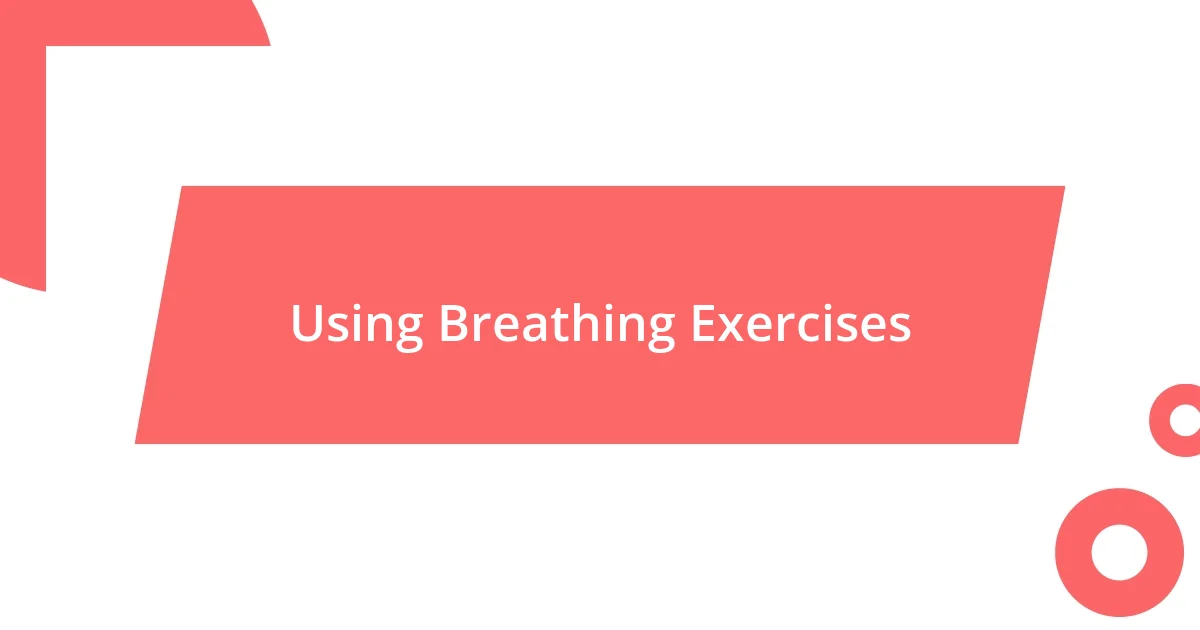Key takeaways:
- Understanding the fear of heights as a primal survival instinct helps to demystify acrophobia and its personal triggers.
- Gradual exposure techniques and breathing exercises are effective methods to manage and gradually overcome the fear of heights.
- Celebrating small victories throughout the journey fosters a sense of achievement and aids in building confidence against fears.

Understanding the Fear of Heights
Fear of heights, or acrophobia, is more common than we often realize. I remember standing at the edge of a tall building, feeling my heart race and my palms sweat. It made me wonder—what exactly is happening in our brains when we face such overwhelming fear?
Essentially, this fear stems from our primal instinct for survival. It’s fascinating to think that, at some point in our evolution, those who were cautious around heights may have fared better. When I found myself peering over a balcony, the rush of anxiety felt all too real; my body was responding as if I were in imminent danger, even though I was safe.
Understanding the roots of this fear helps to demystify it. Have you ever considered how many experiences or memories shape your own fear of heights? Reflecting on that moment when I first climbed a ladder as a child, I realized that the anxiety I felt was rooted in an internal struggle between excitement and terror. This personal insight showed me that overcoming fear can be a journey of self-discovery as much as it is about facing physical heights.

Recognizing Personal Triggers
Recognizing my personal triggers was a crucial step in my journey to overcoming my fear of heights. I noticed that my anxiety peaked in situations where I felt a lack of control, like standing on a narrow ledge or looking down from a high building. It’s like my mind was telling me, “You shouldn’t be here!” and that feeling of vulnerability heightened my fears even more.
At times, just thinking about heights could send a wave of dread over me. I found that crowded spaces—where I felt confined and unable to escape—would amp up my anxiety. Remembering past instances when I was paralyzed by fear really helped me connect the dots. I vividly recall a hike where I hesitated at the top of a cliff, and I realized that my trigger wasn’t just the height, but also the fear of disappointing my friends who were encouraging me to take a step forward. That moment of vulnerability had a lasting impact on my understanding of my fears.
Moreover, recognizing these triggers taught me something profound about myself. It wasn’t just about the heights; it was about how I perceived my surroundings. By identifying the moments that made me anxious, I could then confront them head-on. It became a personal challenge—not just to face heights, but to reclaim my sense of control and autonomy in those situations.
| Trigger | Impact on Fear |
|---|---|
| Feeling of Lack of Control | Increases anxiety, leads to hesitation |
| Crowded Spaces | Heightens vulnerability, amplifies fear |
| Social Pressure | Fear of disappointing others, creates internal conflict |

Gradual Exposure Techniques
Gradual exposure techniques became my lifeline in overcoming my fear of heights. The concept is simple: face your fear step by step. I started small, which made a world of difference. I remember standing on a sturdy chair, feeling initially anxious but gradually getting used to the sensation of being off the ground. Each step felt rewarding and boosted my confidence.
Here are some effective gradual exposure techniques that I found helpful:
- Begin at Ground Level: Start with looking at pictures of heights to familiarize yourself with the concept.
- Use Low Platforms: Stand on a step stool or a low platform to get used to the height without feeling overwhelmed.
- Visit Safe Heights: Go to places like a low balcony or a hill; take your time to acclimate to the surroundings.
- Engage in Breathing Exercises: Use deep breathing to ground yourself before tackling each new exposure step.
- Invite a Supportive Friend: Having someone I trusted with me made the experience more manageable and comforting.
As I worked my way up this ladder of exposures, I realized that each small victory helped chip away at my fear. I felt a sense of achievement every time I stepped outside my comfort zone.

Using Breathing Exercises
When I first started using breathing exercises, it felt a bit awkward. I remember sitting on the edge of my bed, palms sweaty, heart racing at the mere thought of heights. Practice deep breathing—just inhale deeply through your nose and exhale through your mouth. I often tried to visualize my fears leaving my body with each breath out, and it really helped in the moment.
One day before stepping onto a tall observation deck, I decided to sit down and do some focused breathing. I closed my eyes, inhaling for a count of four, holding for four, and exhaling for six. As I repeated this cycle, something interesting happened; my racing thoughts slowed down, and I began to feel grounded. It dawned on me that by simply focusing on my breath, I could shift my entire mindset, making the height feel a little less daunting. Have you ever experienced something similar?
Incorporating breathing exercises into my routine became a game-changer. It wasn’t just the act itself, but the realization that I had a tool to regain control. Whenever I found myself in a precarious situation, I would remind myself to pause and breathe. It was empowering to discover that something as simple as breathing could ground me. And just like that, I learned that each deep breath was a step toward conquering my fears.

Seeking Professional Help
Seeking professional help was a game-changer in my journey to overcome my fear of heights. After months of grappling with that dread, I decided to reach out to a therapist who specialized in anxiety disorders. I remember sitting in her cozy office, my heart racing as I shared my experiences. It felt both terrifying and liberating to open up, and I quickly realized that having someone guide me through this process provided a level of support I hadn’t anticipated.
During our sessions, we explored the underlying causes of my fear. It was like peeling back the layers of an onion—each session revealed another reason behind my anxiety. One particular day, she asked me to recall a childhood experience related to heights, and suddenly I was flooded with memories. It struck me how past events shape our fears, and addressing those memories was a critical step in reclaiming my confidence. Does a memory from your past shape your fears?
The therapist introduced me to cognitive-behavioral techniques that helped me reframe my thoughts. I remember one exercise vividly: I had to write down my fears and then counter them with rational responses. At first, it felt silly, but seeing everything written out made them seem far less daunting. These strategies not only empowered me but also made me feel like I was actively participating in my healing. Seeking professional help, I discovered, wasn’t a sign of weakness but rather a courageous step toward understanding myself better.

Practicing Mindfulness Strategies
Practicing mindfulness strategies became a cornerstone for me in facing my fear of heights. I remember one particular afternoon when I stood at the foot of a tall climbing wall. Instead of letting panic set in, I focused on the sensations around me—the coolness of the wall, the texture of the chalk in my hands. By anchoring my awareness in the moment, I realized I could manage my emotions, allowing the height to feel less overwhelming. Have you ever tried shifting your focus like that?
One mindfulness technique that resonated with me was the body scan. Lying down in a quiet place, I would mentally check in with each part of my body, one by one. Initially, I felt silly, almost as if I were wasting time. But, over time, this practice helped me notice where I held tension, especially when thinking about heights. When I approached bridges or high places afterward, I would remind myself to scan my body again, letting go of the tightness in my shoulders. It’s fascinating how awareness can bring such relief, isn’t it?
Another experience I cherished was incorporating visualization into my practice. I would imagine myself at a breathtaking vantage point, overlooking an expansive view. In these visualizations, I felt empowered and confident, as if I were already conquering my fears. Each time I stood a little taller in my mind’s eye, it contributed to my actual experience when I faced those heights. Could imagining success actually help you achieve it? For me, embracing these mindfulness strategies allowed me to step out of my comfort zone, fostering a sense of fearlessness I hadn’t thought possible.

Celebrating Small Victories
Celebrating small victories was crucial in my journey to overcome my fear of heights. I vividly remember the first time I stood on a sturdy chair to reach for a shelf. My heart raced, yet I felt a rush of pride as I noticed how small that leap appeared in hindsight. A simple act turned into an empowering triumph, reminding me that progress isn’t always a monumental leap but often a series of gentle steps.
As I gradually exposed myself to higher places, every achievement felt like a significant milestone worth recognizing. I recall the thrill the day I stepped onto a balcony on the second floor of a building. My knees quivered initially, but every moment spent looking down felt like conquering a mountain. Celebrating that success, I shared my experience with friends, allowing their encouragement to amplify my joy.
These small victories became the fuel for my journey. I learned to document them in a journal. Each time I recorded a new experience, whether it was a successful elevator ride or climbing a small hill, I felt a sense of accomplishment wash over me. It was almost like keeping a gratitude list, but instead, it was a celebration of bravery in the face of my fears. Isn’t recognizing these triumphs invigorating? Each entry reminded me that I was steadily climbing my way to overcoming what once felt insurmountable.















